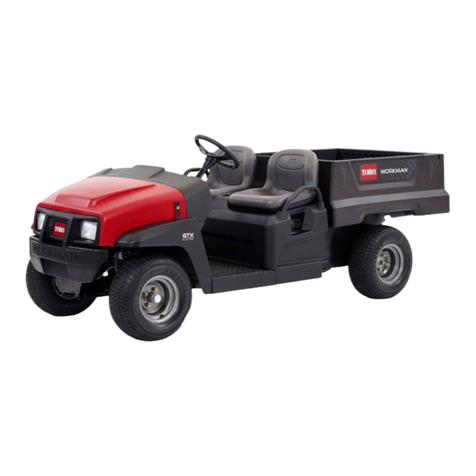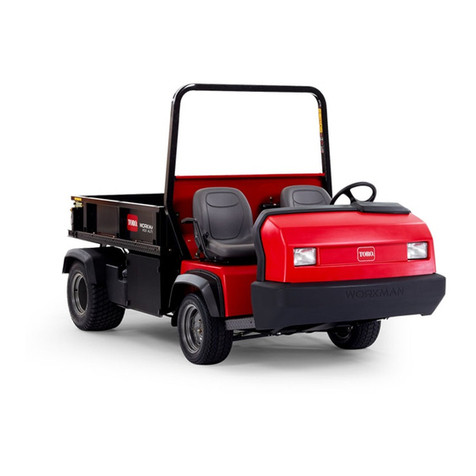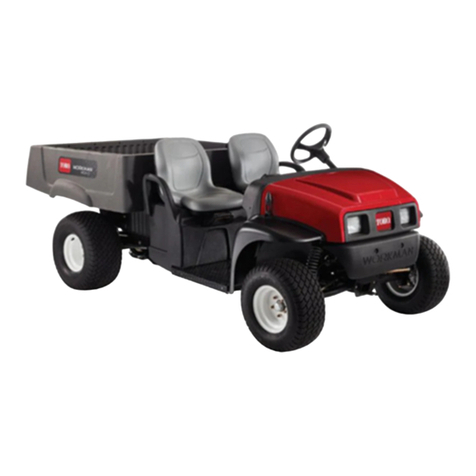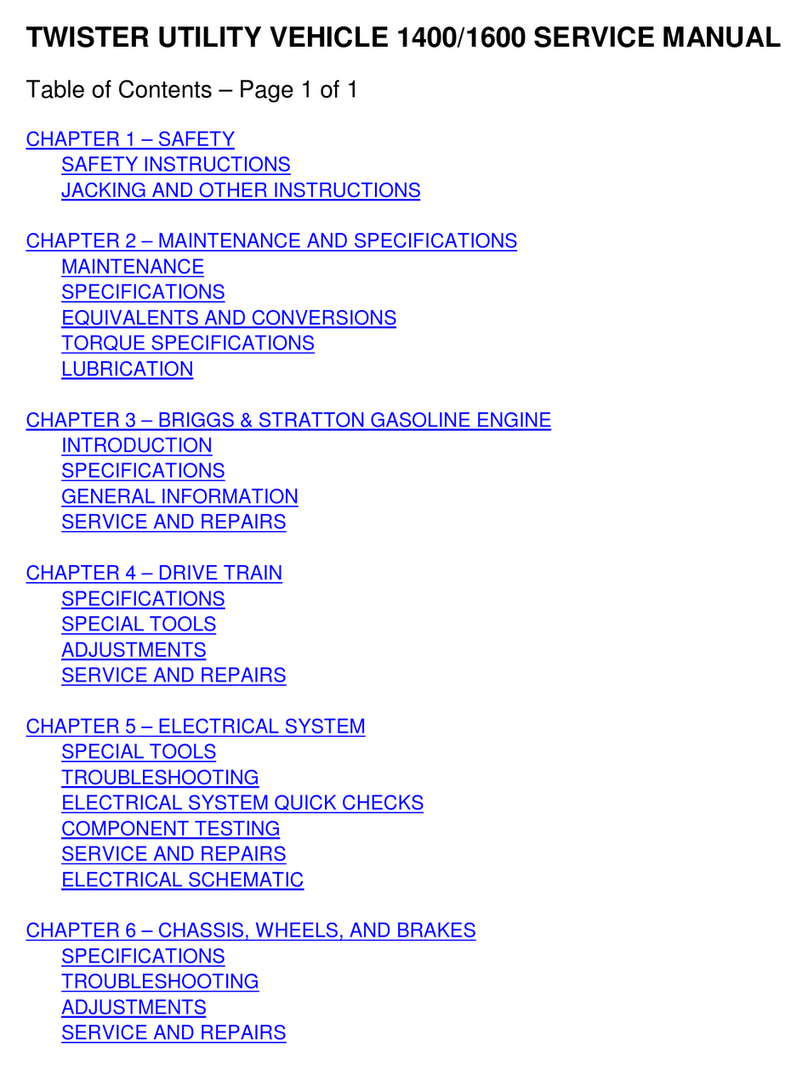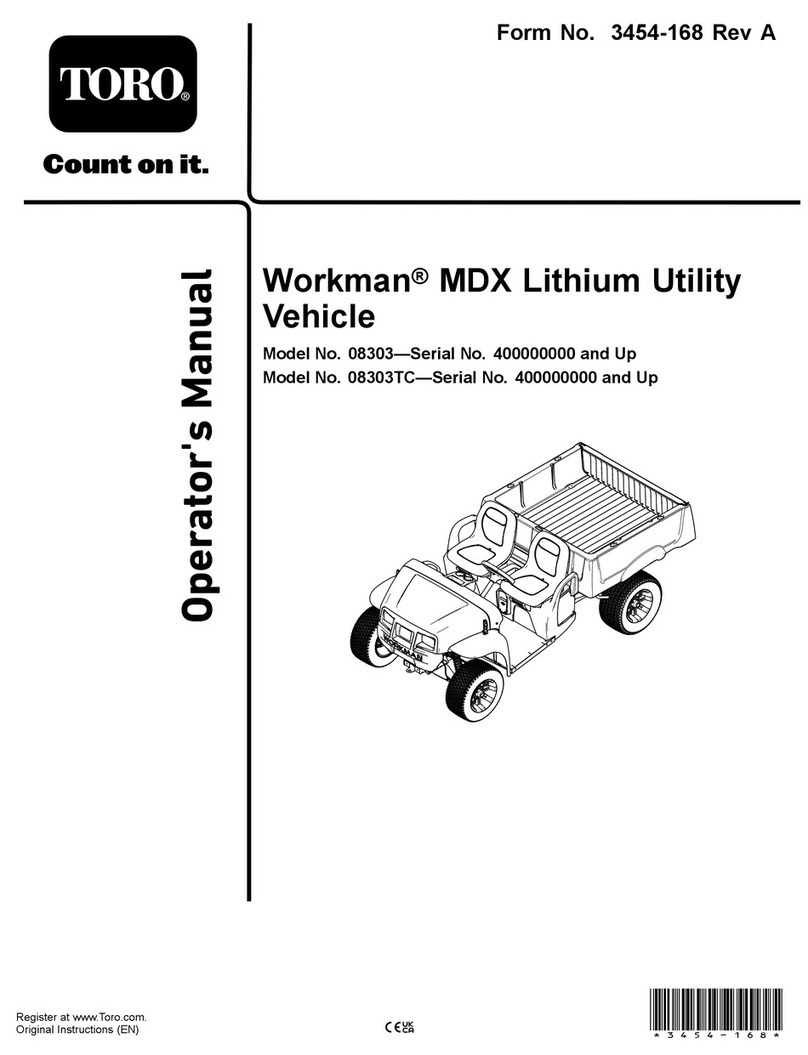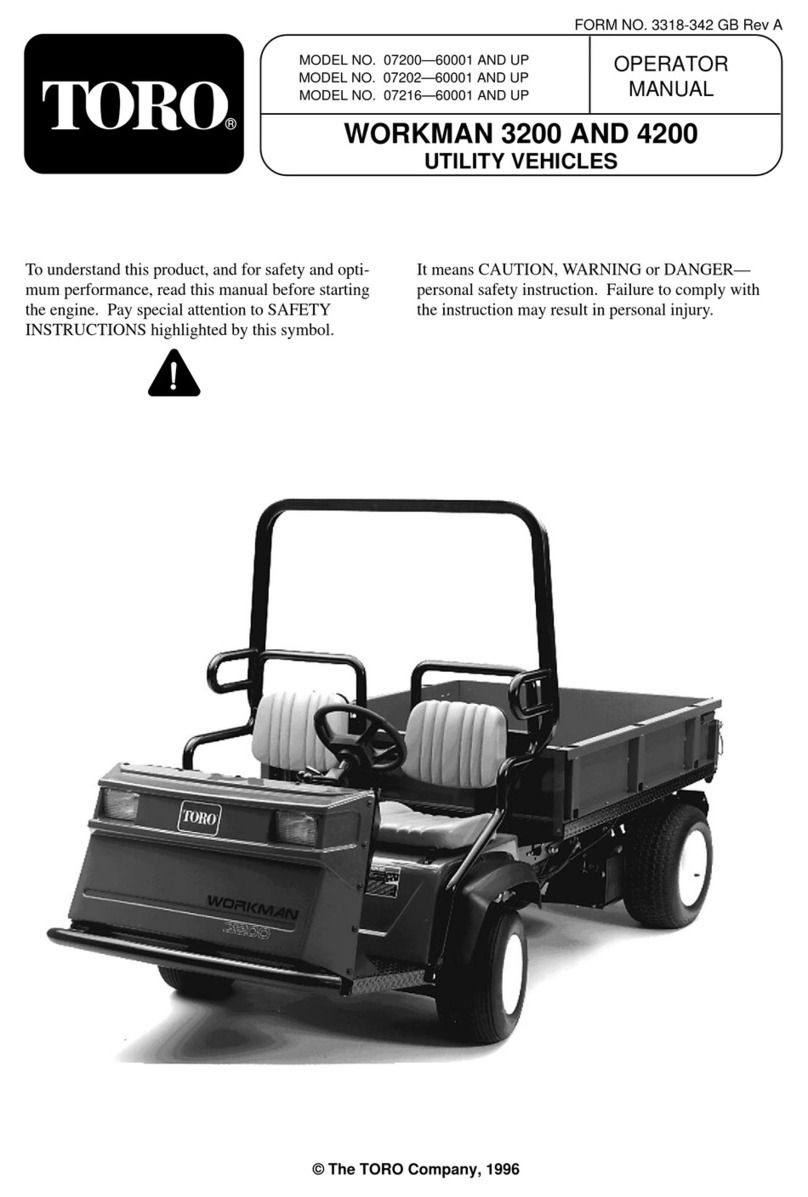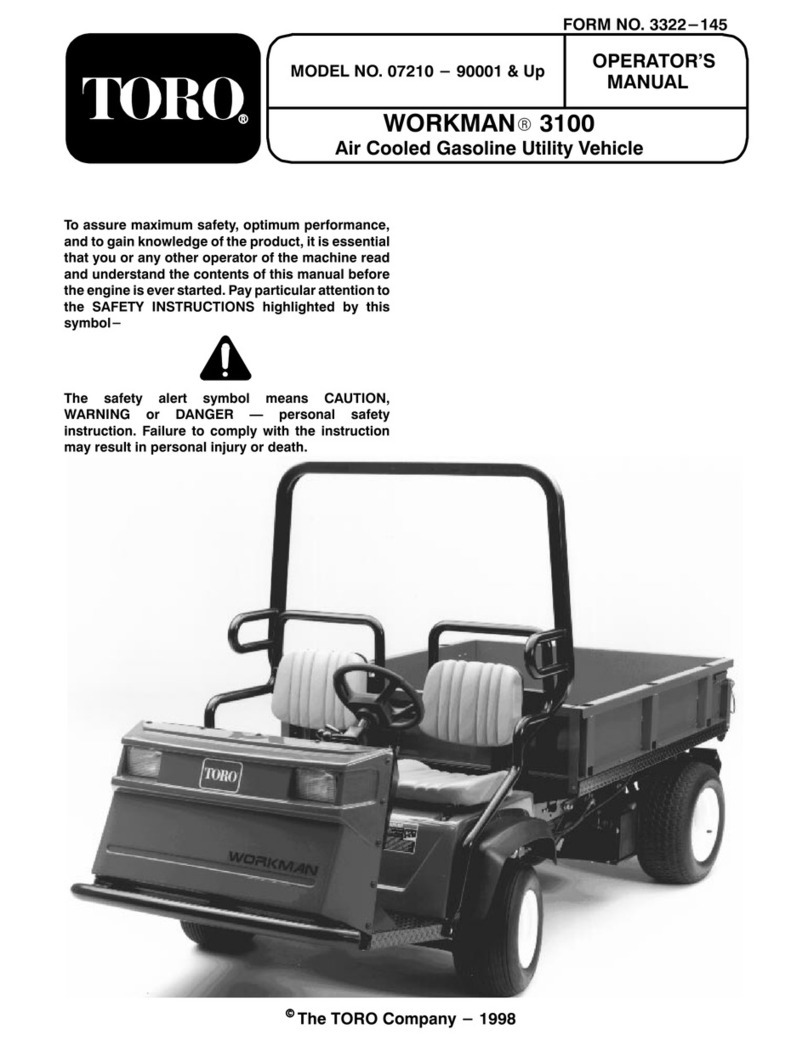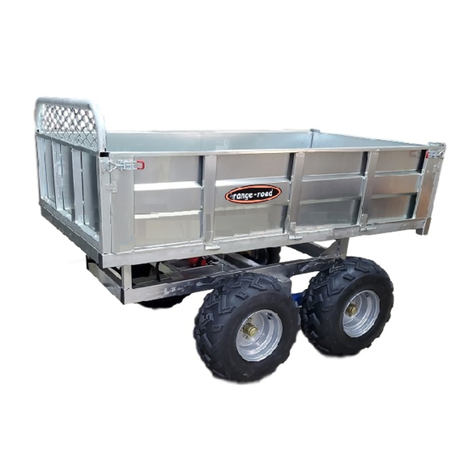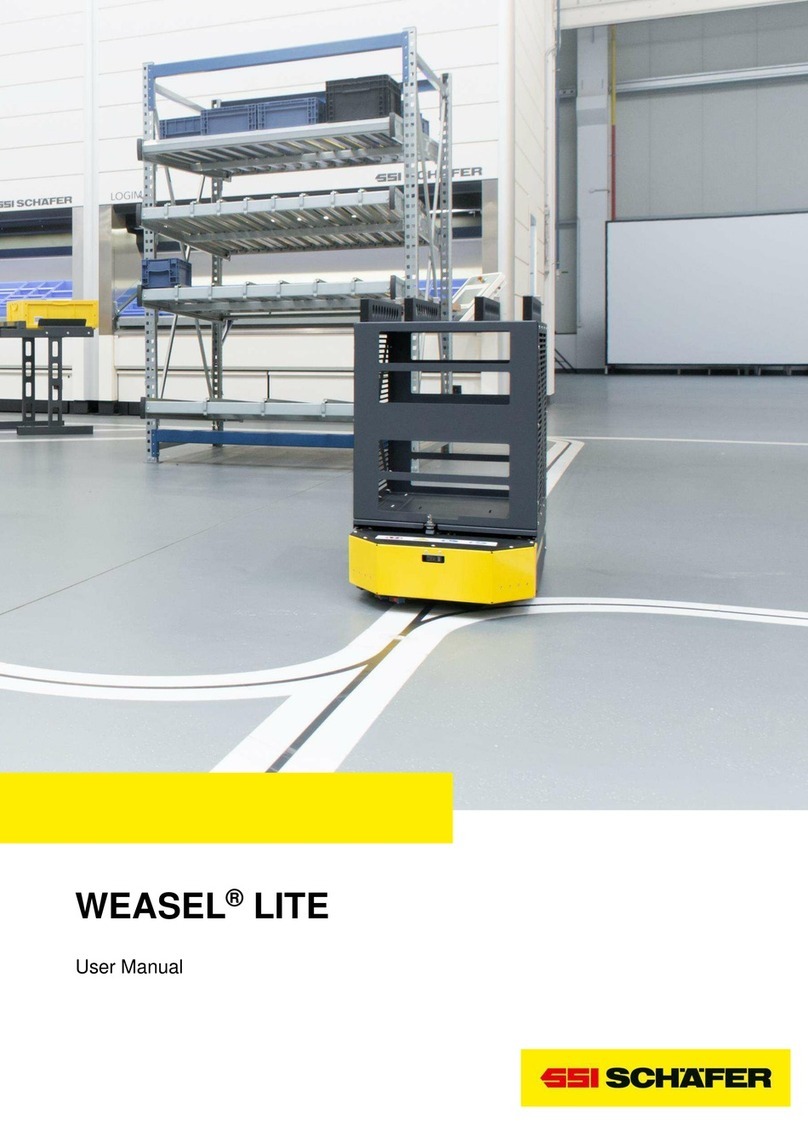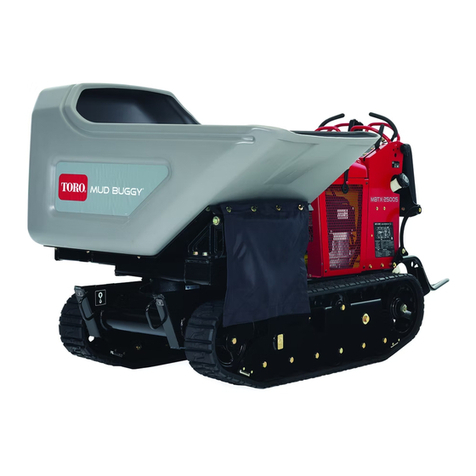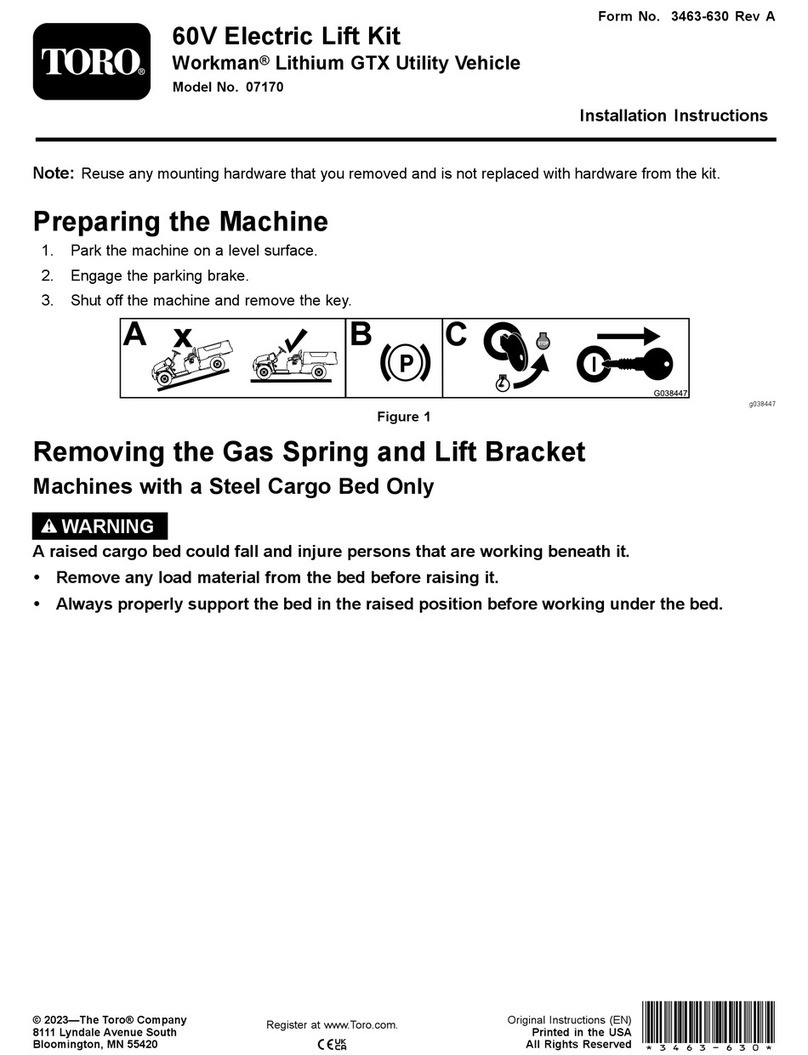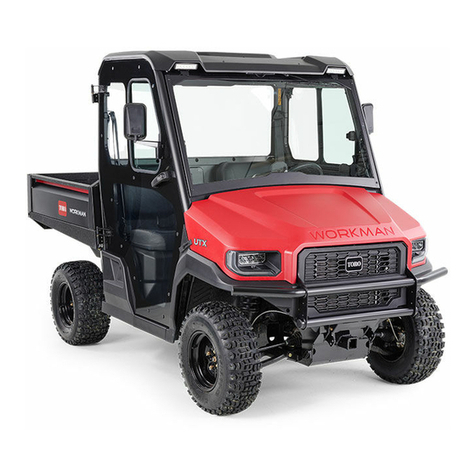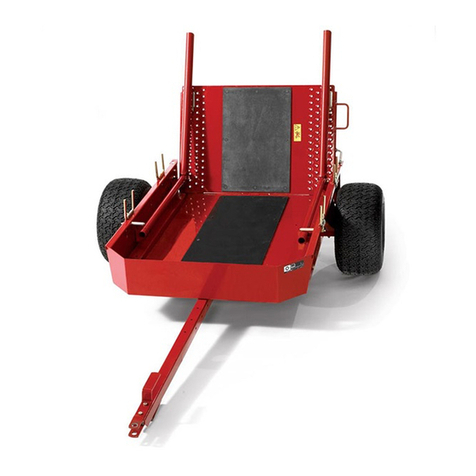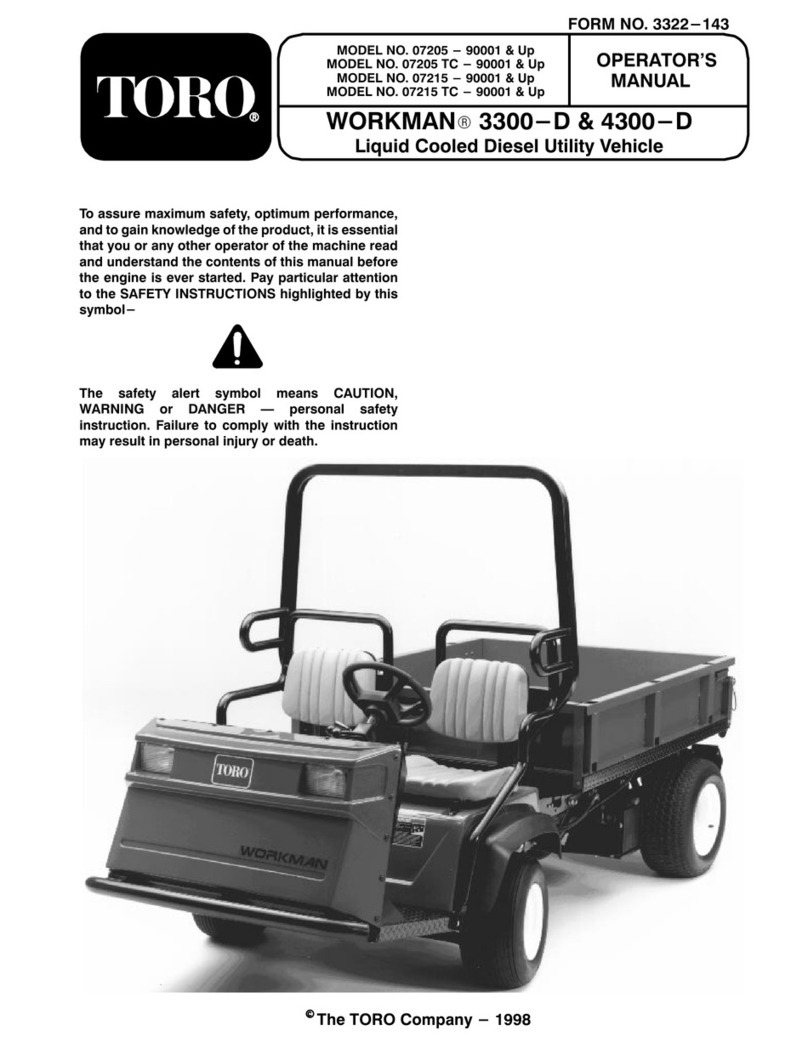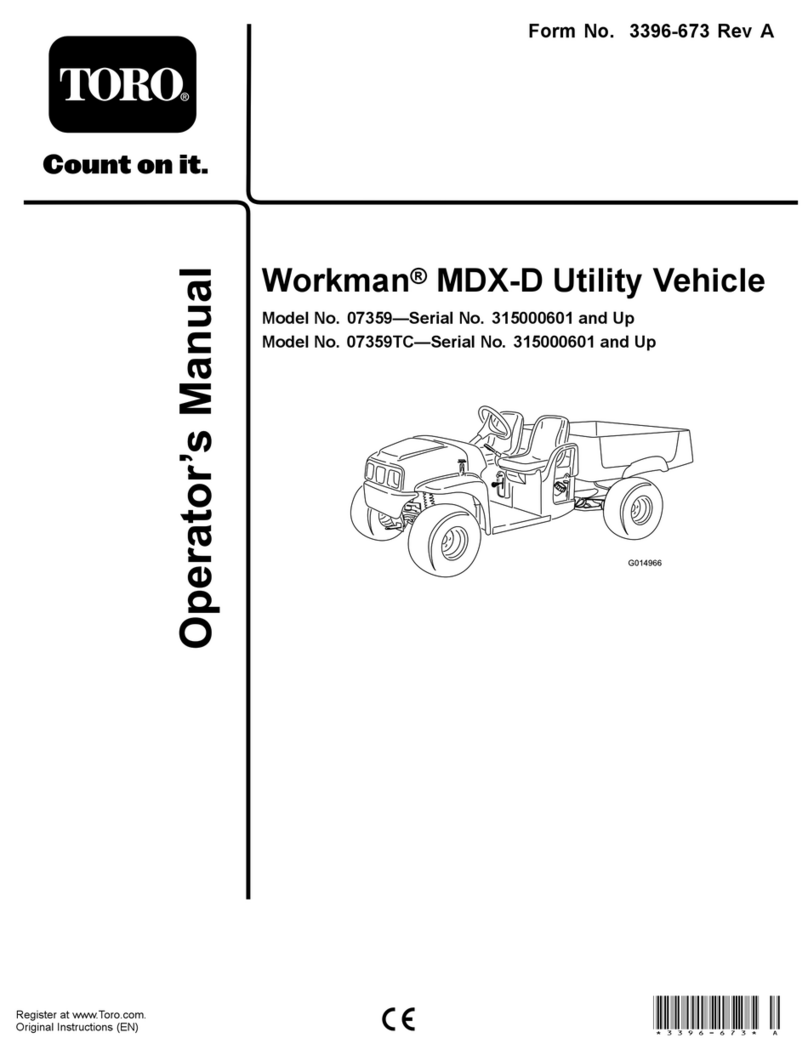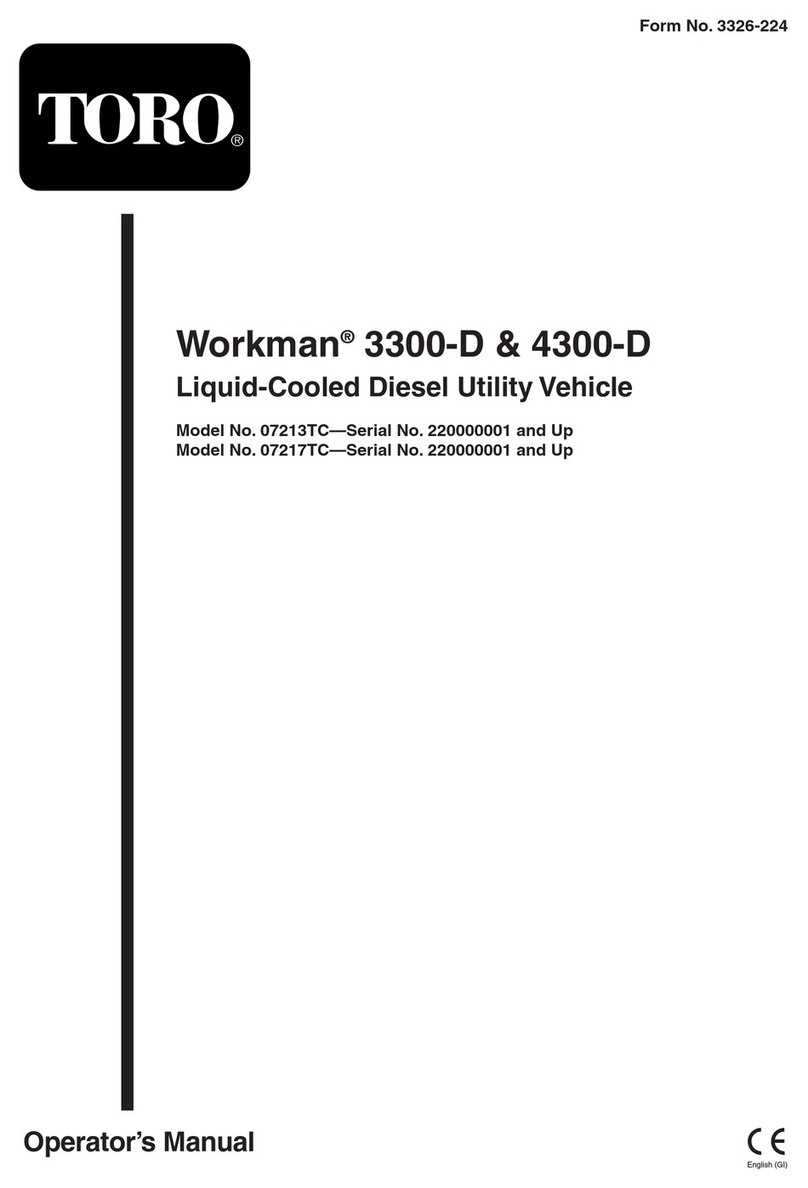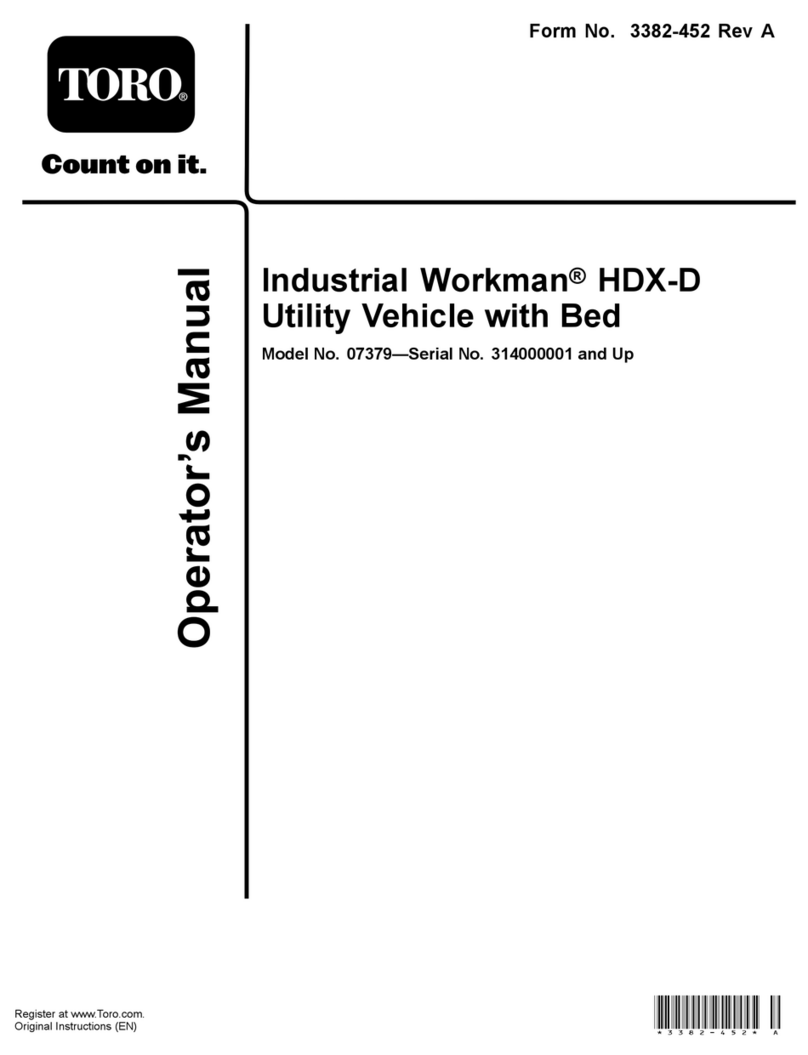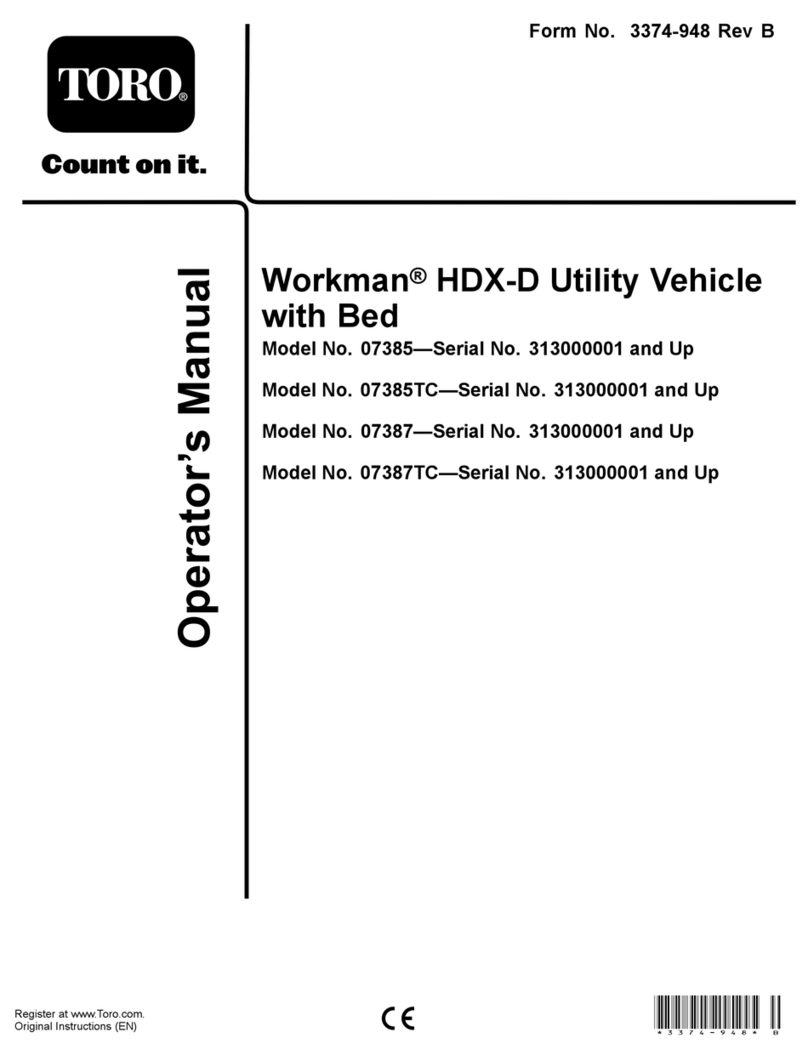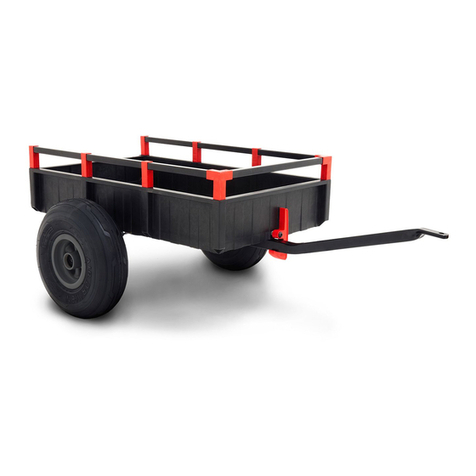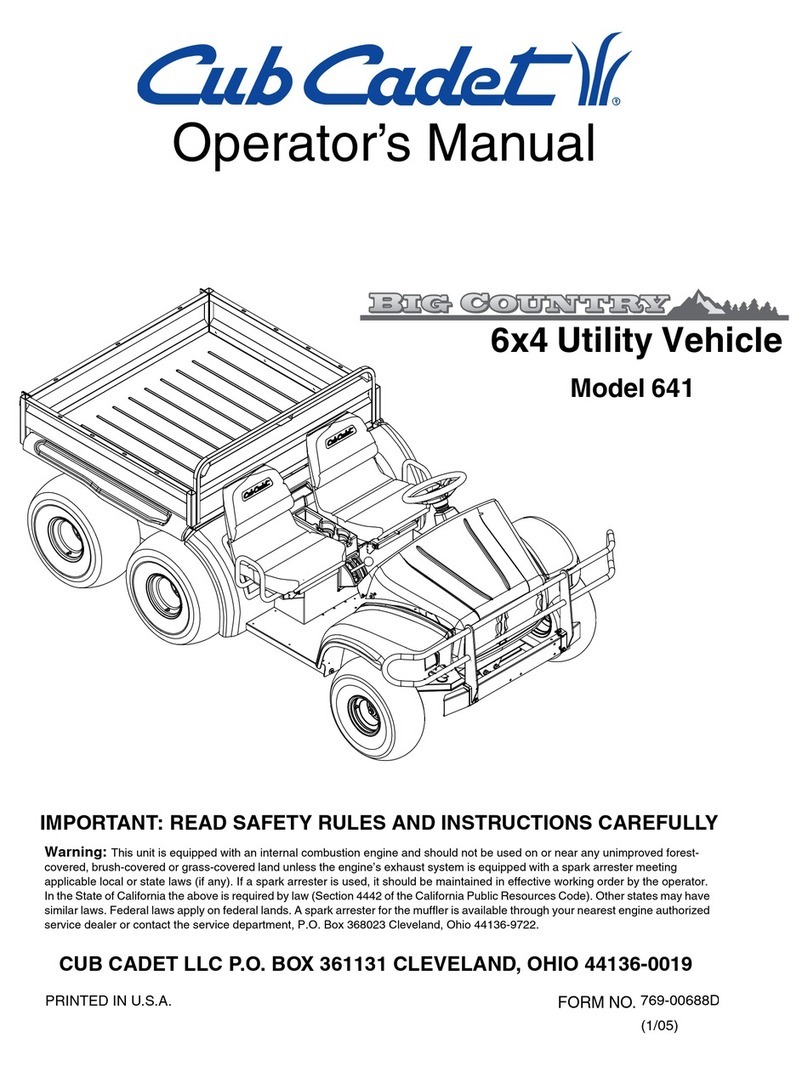
•Neverremovethefuelcaporaddfuelwiththe
enginerunning.
•Allowenginetocoolbeforerefueling.
•Neverrefuelthemachineindoors.
•Neverstorethemachineorfuelcontainerwhere
thereisanopename,spark,orpilotlight,such
asonawaterheateroronotherappliances.
•Removeequipmentfromthetruckortrailerand
refuelitontheground.Ifthisisnotpossible,then
refuelsuchequipmentwithaportablecontainer
ratherthanfromafuel-dispensernozzle.
•Iffuelisspilledonclothing,changeclothing
immediately.
•Neveroverllthefueltank.Replacethefuelcap
andtightenitsecurely.
Operation
•Theoperatorandpassengershouldremainseated
wheneverthemachineisinmotion.Theoperator
shouldkeepbothhandsonthesteeringwheel,
wheneverpossible,andthepassengershould
usethehandholdsprovided.Keeparmsandlegs
withinthemachinebodyatalltimes.
•Driveslowerandturnlesssharplywhenyouare
carryingapassenger.Rememberyourpassenger
maynotbeexpectingyoutobrakeorturnand
maynotbeready.Nevercarrypassengersinthe
boxoronattachments.
•Neveroverloadyourmachine.Thenameplate
(locatedunderthemiddleofthedash)shows
theloadlimitsforthemachine.Neveroverll
attachmentsorexceedthevehiclemaximumgross
vehicleweight(GVW).
•Failuretooperatemachinesafelymayresultin
anaccident,tipoverofthemachine,andserious
injuryordeath.Drivecarefully.Topreventtipping
orlossofcontrol,takethefollowingprecautions:
–Useextremecaution,reducespeed,and
maintainasafedistancearoundsandtraps,
ditches,creeks,ramps,anyunfamiliarareas,
orotherhazards.
–Watchforholesorotherhiddenhazards.
–Usecautionwhenoperatingthemachine
onaslope.Normally,travelstraightupand
downslopes.Reducespeedwhenmaking
sharpturnsorwhenturningonhillsides.Avoid
turningonhillsideswheneverpossible.
–Useextracautionwhenoperatingthemachine
onwetsurfaces,athigherspeeds,orwitha
fullload.Stoppingtimewillincreasewithafull
load.
–Avoidsuddenstopsandstarts.Donotgo
fromreversetoforwardorforwardtoreverse
withoutrstcomingtoacompletestop.
–Donotattemptsharpturnsorabrupt
maneuversorotherunsafedrivingactionsthat
maycausealossofcontrolofthemachine.
–Whendumping,donotletanyonestandbehind
machineanddonotdumptheloadonanyone’s
feet.Releasethetailgatelatchesfromtheside
ofbox,notfrombehind.
–Keepallbystandersaway.Beforebacking
up,looktotherearandensurethatnooneis
behindthemachine.Backupslowly.
–Watchoutfortrafcwhennearorcrossing
roads.Alwaysyieldtherightofwayto
pedestriansandothermachines.Always
signalyourturnsorstopearlyenoughsoother
personsknowwhatyouplantodo.Obeyall
trafcrulesandregulations.
–Neveroperatethemachineinornearanarea
wherethereisdustorfumesintheairwhich
areexplosive.Theelectricalandexhaust
systemsofthemachinecanproducesparks
capableofignitingexplosivematerials.
–Alwayswatchoutforandavoidlowoverhangs
suchastreelimbs,doorjambs,overhead
walkways,etc.Makesurethereisenough
roomoverheadtoeasilyclearthemachine
andyourhead.
–Ifyouareeverunsureaboutthesafeoperation
ofthemachine,stopyourworkandaskyour
supervisor.
•Beforegettingofftheseat:
–Stopthemachine.
–Lowerthebed.
–Shuttheengineoffandwaitforallmovement
tostop.
–Engagetheparkingbrake.
–Removethekeyfromthekeyswitch.
•Donottouchtheengine,transmission,radiator,
muferormufermanifoldwhiletheengineis
runningorsoonafterithasstoppedbecausethese
areasmaybehotenoughtocauseburns.
•Ifthemachineevervibratesabnormally,stopthe
machineimmediately,shutoffthemachine,wait
forallmotiontostopandinspectfordamage.
Repairalldamagebeforeresumingoperation.
•Lightningcancausesevereinjuryordeath.If
lightningisseeninthearea,donotoperatethe
machine;seekshelter.
Braking
•Slowdownthemachinebeforeyouapproachan
obstacle.Thisgivesyouextratimetostoporturn
away.Hittinganobstaclecaninjureyouandyour
passenger.Inaddition,itcandamagethemachine
anditscontents.
5

